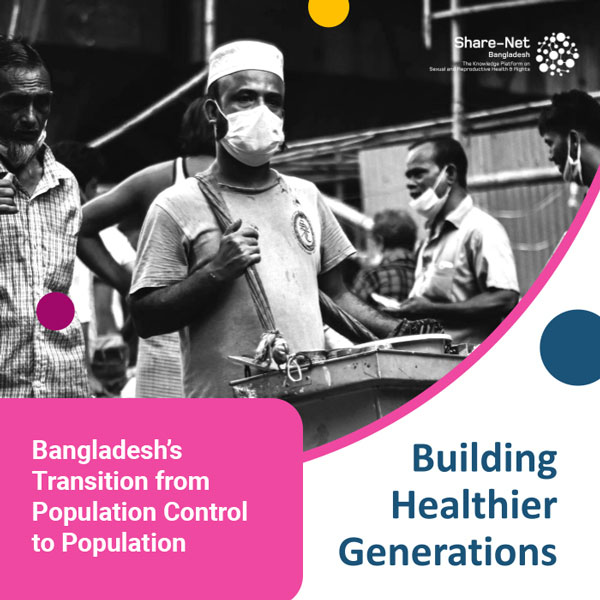Building Healthier Generations: Bangladesh’s Transition from Population Control to Population Management
“Contraceptive prevalence in Bangladesh increased from 8% in 1975 to 62% in 2014, a remarkable 55% rise over 39 years,” according to recent data. Despite this success, the current stagnation in contraception use and family planning services highlights the need for a paradigm shift from population control to population management.
Bangladesh’s journey towards better sexual and reproductive health and rights (SRHR) began with the first five-year plan in 1973-78, aiming to reduce fertility rates and improve maternal and child health outcomes. By deploying female field workers to provide household-level family planning services, the country saw significant improvements in contraceptive use and fertility rates. However, the momentum has slowed, necessitating a renewed focus on comprehensive population management strategies aligned with the Sustainable Development Goals (SDGs).
Addressing SRHR issues effectively is crucial for achieving SDG targets by 2030. Bangladesh is currently in the third stage of demographic transition, characterised by rapid population growth and a significant “black hole” effect of population momentum due to its youthful demographic. While this has spurred economic growth through a demographic dividend, projections suggest that Bangladesh might lose this advantage by 2035-36, transitioning towards an older population with a higher dependency ratio.
With life expectancy rising by 22 years between 1972 and 2021, the focus on population management should now encompass improving access to family planning, addressing unintended pregnancies, and ensuring equitable reproductive health services. Approximately 22% of total live births are unintended, and 24% are short-interval pregnancies, posing significant challenges for maternal and child health. The high total fertility rate among rural, uneducated, and underprivileged groups, ranging from 2.80 to 3.10 compared to 2.0 among more advanced groups, underscores the disparities in access to SRHR services.
Bangladesh’s shift towards population management must prioritise the unique needs of these disadvantaged groups. Ensuring regular home visits by family planning workers and increasing community-level access to contraceptive services can mitigate the stagnation in contraception use. Additionally, addressing structural challenges at healthcare facilities is essential to improve access and quality of care for maternal and child health services.
Effective family planning methods and counseling remain critical to address high rates of unintended pregnancies and short-interval pregnancies, which are prevalent among the rural poor. Enhancing knowledge and awareness through community engagement and tailored educational programs can empower women to make informed reproductive choices.
Bangladesh’s focus on population management aligns with the broader goals of the SDGs, particularly those related to good health and well-being (SDG 3) and gender equality (SDG 5). By adopting a holistic approach that integrates SRHR and equitable healthcare access, Bangladesh can build a sustainable future where all individuals can exercise their sexual and reproductive rights.
Bangladesh must transition from population control to population management to sustain its progress in SRHR and achieve its SDG targets. This shift involves addressing the needs of the most vulnerable populations, ensuring equitable access to family planning services, and enhancing the overall quality of healthcare. By focusing on these areas, Bangladesh can continue to improve maternal and child health outcomes, harness its demographic dividend, and build a more equitable and prosperous society.
Source: The Daily Star
Source Contributor: Dr Md Nuruzzaman Khan, Assistant Professor, Department of Population Science, Jatiya Kabi Kazi Nazrul Islam University and Associate Fellow of Bangladesh Academy of Sciences.
Picture Credit: Simon Reza/Unsplash

